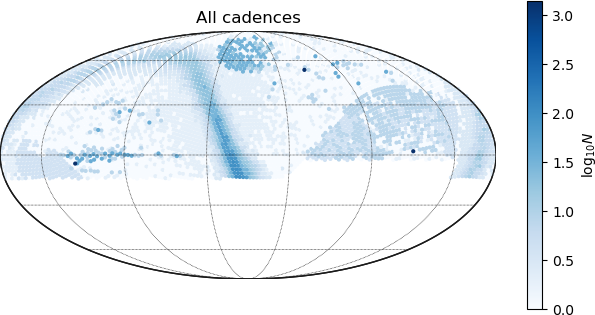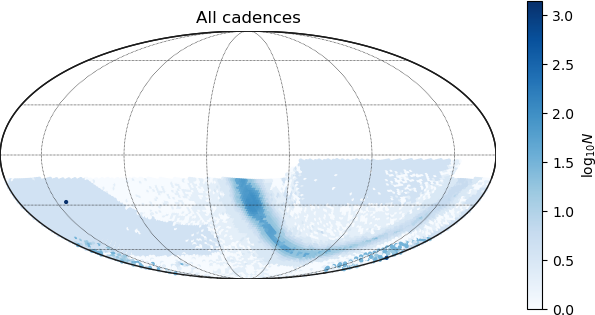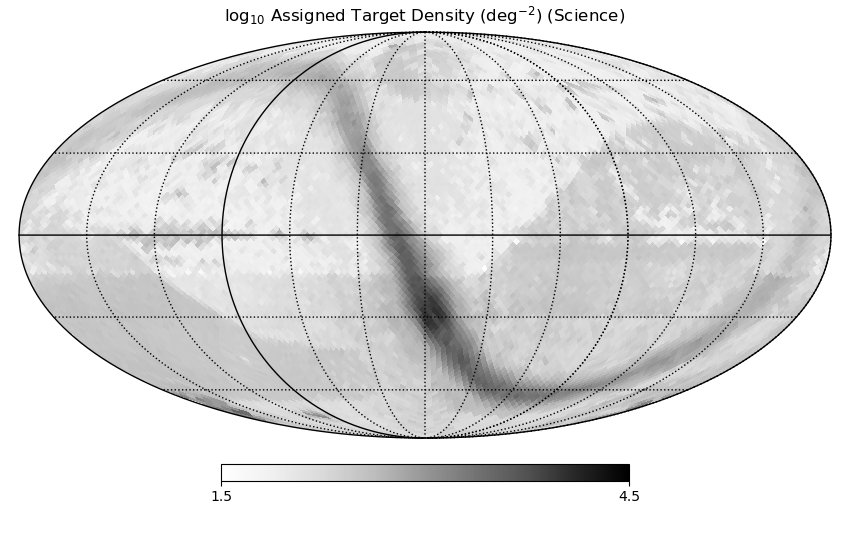robostrategy is software to create the overall observing plan, including which fields to observe, how many times to observe them, with what cadences, and how to assign fibers to targets within each visit. It is described in an upcoming paper (Blanton et al., submitted).
Nomenclature:
- Field: location on sky defined by central location and position angle
- Design: a single observation (one BOSS exposure, two APOGEE exposures, with BOSS and APOGEE observed simultaneously).
- Carton: set of targets identified with a specific target selection algorithm
- Cadence: a specific requirement for number of designs, how they should be distributed in time, and their sky brightness requirements (explained further in the roboscheduler documentation)
- Epoch: a set of observations, meaning multiple designs, taken within a short period of time and treated as a single point in time
For a field that we will observe with a particular cadence, robostrategy assigns fibers to targets in the visits of the cadence, accounting for the fiber reach and collision constraints determined by kaiju. The assignments are performed in the following order:
- Science Requirements Document (SRD) Targets: These targets are assigned in order of increasing priority number. They each have a desired cadence. If there are fibers still available, that can reach the target, that do not cause a collision, and that are in a set of designs that fully satisfies the cadence, then the target will be assigned; otherwise the target will not be assigned any fibers.
- Reassignments: For a subset of the SRD target cartons, we perform a second pass and assign available fibers to targets. For targets whose cadences are already satisfied we assign fibers on extra designs where possible, which adds exposure time and/or new epochs. For targets with no assigned fibers up to this point, we assign fibers on designs where possible, which adds new targets.
- Open Fiber Targets: These are targets submitted in the open fiber program. They are assigned in the same way as SRD targets.
- Filler Targets: These are large cartons across the whole sky assigned to any remaining fibers, in the same way as SRD and Open Fiber targets.
- Complete: Finally, we add any extra visits or new visits to any target for which there is an unused fiber.
During this assignment, the software guarantees that the required number and sky distribution of standard stars and sky fibers are included in each design.
To decide what cadence to observe each field with, we consider the available time as a function of Local Sidereal Time (LST) and anticipated sky brightness (primarily determined by moon illumination). For each field, we perform fiber assignments for a large set of cadence choices. For each one we calculate a metric based on the number of targets satisfied from among the “core” subset of SRD targets, weighted by a set of relative values. We then choose the set of cadences for the fields that maximizes the total value, while respecting the total available time.
For the initial survey plan based on the original target selection version (0.5) the allocation of cadences at Apache Point Observatory (left) and Las Campanas Observatory (right) are:


And the density of targets assigned fibers as a function of position on the sky is shown below:

Both of these sets of results undergo revision throughout the survey based on changing target selection criteria and survey progress.
